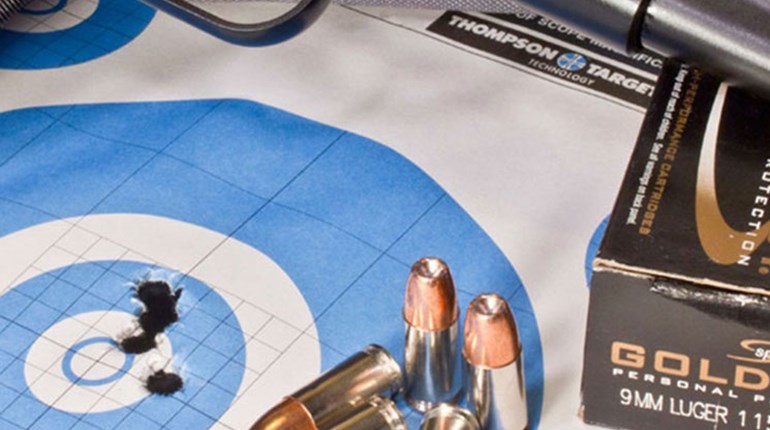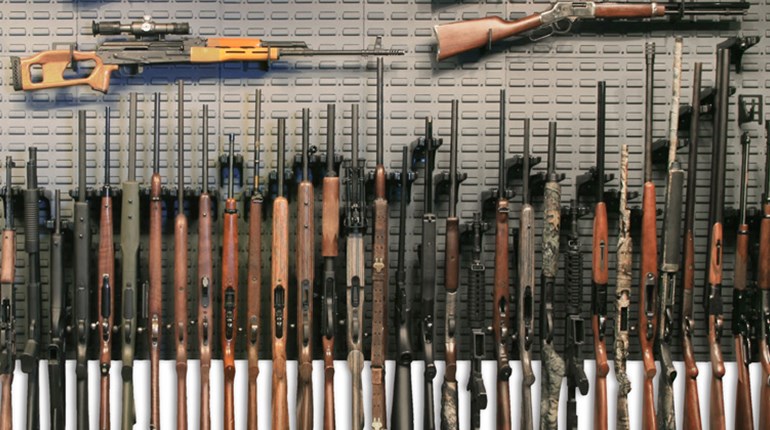
Basic Home Safety
Volumes have been written on defensive tactics by gurus who have spent their lives studying it. But most Americans rarely have time for a sit-down dinner, much less training for an unlikely home invasion. Nonetheless, there is encouraging news: With a firearm, some strategic planning and knowledge on how to use both, you can turn the odds in your favor if a criminal invades your home.
There are a thousand different scenarios to consider-from the architectural design of your home, security systems, number and age of children, layout of rooms and other factors-but let's keep it simple: You have an average home in suburban USA, and you want to be able to reasonably defend it.
First, make sure the outside of your home is well lit, and lock all windows and doors. If you can't install peepholes in outside doors, view visitors from a side window before opening the door. All the while, know how to get to a safe room or position in your home fast. Know where your firearm is and that you can access it quickly. Talk over a plan with your family. While variables will likely change in an emergency, merely talking about a simple plan helps.
Consider that the most dangerous time for a criminal to intrude is when you're most vulnerable-when you are sleeping. To combat this, install a hotel-like lock on your bedroom door. This may seem weird at first, but after you understand its benefits, it will be as normal as the lock on your front door. If you have kids, consider devising a secret knock for them. The hard reality is, if Mom and Dad can't defend themselves from attack first, the kids' chances are not good.
A lock prevents a non-forceful intruder from entering your room. And if the intruder is forceful, his effort will wake you up so you can defend yourself and your family. If you are awake and ready with a plan and a gun in your bedroom, you have the advantage.
Adam Heggenstaller, a self-defense expert and father of two toddlers, says his plan is good and simple: In the event of a home intrusion, his wife will retrieve her gun and call 911 from their bedroom while he takes his gun and retrieves the kids. This means they have two guns, so they must store their guns safely out of reach of their children but capable of being accessed quickly. A biometrically accessed bedside safe like Hornady's new RAPiD Safe is perfect. Discreet cabinets like those from NRA Jotto Gear are an option too.
Have a secondary way to exit your bedroom. Is there another door? If not, can you escape out a window? If on the second floor, consider a rope ladder for worst-case scenarios; it could also save you from fire. Beware, however, that you should only go outside if you feel it's safer there. Your bedroom is an extremely effective defensive position if you have a gun. Plan your defense using available cover and be prepared to do whatever it takes to survive.
Keep your cell phone in your bedroom. While you must depend on your wit and skill to defend yourself, a cell phone is your line of communication, and you should dial 911 as soon as possible.
Ultimately, families must decide what makes sense for their specific needs. But if someone forces their way into your home, remember: the laws are on your side. (See Castle Doctrine sidebar.)
Defensive Firearms
If you can afford a specialized gun for home defense, great. As a general rule, long guns are better than handguns for home defense. Choose any gun you are comfortable with, practice with it, and keep it in one dedicated place. Then get a dependable flashlight. In many home-invasion scenarios, identifying the target is paramount. Plus, blinding light can often dissuade an attacker on its own. Flashlight attachments for your gun are wonderful because they keep your hands free and the light handy.
If you don't have a specialized gun, but you're a hunter who's long used a Remington 870 shotgun, for example, then that may be your best choice. In fact, a shotgun (12- or 20-gauge) is likely the best choice, period. Some people argue that birdshot is best for home scenarios because it will not penetrate walls as much as buckshot, but there's also a strong argument for using buckshot to kill an assailant who's hiding behind a wall. Keep in mind, however, that a shotgun still must be aimed. At a couple yards, the pattern of a shotgun is only about two inches in diameter, so it's not like in the movies where you can't miss.
AR-15-style rifles are the guns of choice for professionals, but they can be more complicated to use. If you have mastered your tricked-out AR-15, use it, but don't think you have to have one. Most home invasions involve one perpetrator who will flee the moment he knows you're armed with anything. You want to intimidate with a gun, and shoot as few times as necessary, if necessary, to stop a threat.
If all you have is a handgun, that's fine. With practice they can be very accurate. They have an advantage in that they can be held with one hand while dialing a phone or directing a child. Consider high-capacity handguns such as Glock, Smith and Wesson M&P, Springfield XD, FN9 or others chambered in 9mm, .40 S&W or .45 ACP. Obviously the bigger the caliber, the better with all else being equal, but in the real world, few things are equal. A .22 LR that you can shoot well is better than a .44 Magnum that you can't. Revolvers chambered in .38 Special or .357 will also get your point across to a would-be attacker, and they are simple to operate for folks who have no intentions of practicing. I strongly encourage to practice with any gun until its operation becomes second nature. Shooting it with the ammo you intend to use will also verify its reliability. Buy premium, hollow-point ammo, not cheap, full metal jacket surplus stuff that doesn't stop bad guys well.
If you must shoot, always consider the position of "friendlies" in the house and beyond. For example, if you share a wall with neighbors, plan to use this wall as a defensive wall and shoot towards the other.
Know that the chance of injury or death to all in the house goes up exponentially with each round fired. While you are responsible for stopping a threat, you are also responsible for your bullets.
Castle Doctrine
Most states have adopted some form of "Castle Doctrine" or "Stand Your Ground" laws that say law-abiding citizens have no duty to retreat from their home if they feel threatened. Some states have expanded the definition of "home" to include locations outside the home. Check your state's laws at www.nraila.org.







































